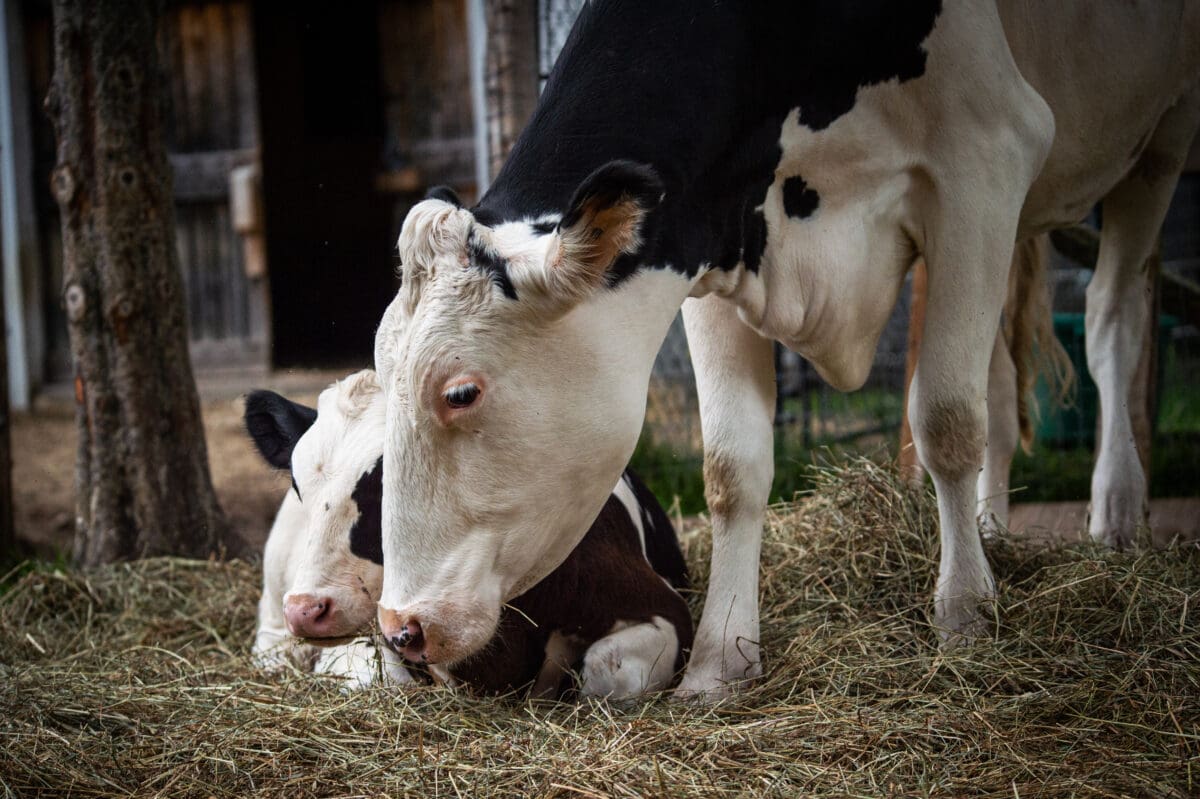A version of this article was originally published in The Province.
Amid an onslaught of controversies surrounding the Canadian dairy industry, including a scandalous viral video of an Ontario farmer dumping milk down the drain, new guidelines for the care of dairy cows have been quietly released.
Late last week, the National Farm Animal Care Council (NFACC) released its updated Dairy Cattle Code of Practice, which provides guidelines for the care of dairy cows on farms across Canada. The Code reportedly received a record-setting number of comments from more than 5,800 individuals. Although a strong public response prompted some positive changes, several areas of the Code still fall short of expectations.
During the public comment period on the Code of Practice, one of the sections that received the strongest response was that on calf housing.
It’s easy to see why; like other social animals, calves thrive with interaction and physical touch. Most human parents are familiar with the importance of cuddling to a baby’s development. Like human children, calves who are deprived of physical contact experience stress, slower growth, weakened immune systems, and lower welfare. Conversely, research shows that “pair or group housed calves show improved cognitive development, perform more play behaviours, and are less reactive to novelty”.
A 2018 study found that 63% of farms in Canada reared dairy calves in individual housing. It is a promising step that the NFACC has acknowledged in the new Code of Practice the harms that this can cause, as well as the many benefits of social housing for calves.
Unfortunately, the new regulations pave a long road to change. The updated Code of Practice will continue to permit the isolated housing of calves until 2031. This prolonged regulation shift will put millions of calves at risk of being housed individually over the next eight years, denying young calves the ability to engage in their natural herding instincts during their formative months.
Perhaps most shocking is the continued absence of required emergency planning.
The public comment period for the Dairy Cattle Code of Practice launched November 29, 2021, while rural communities in B.C. were still reeling from the impacts of disastrous flooding. The floods claimed the lives of approximately 640,000 farmed animals in B.C., including about 420 dairy cattle. Farmers, veterinarians, volunteers, and community members scrambled to evacuate and house thousands of animals, as many were trapped for days standing in deep, murky water.
The Code recommends that farms develop a plan for evacuating cattle in the event of an emergency, but has no requirements around emergency planning.
Other concerns that remain unresolved by the updated guidelines include the continued use of electric prods, the stressful separation of cows from their newly born calves, the lack of required outdoor access, and the transportation of cows who are compromised or lactating.
There is some good news – the new Code explicitly prohibits abusive handling, which it defines as “kicking, beating, striking, tail twisting, dragging, improper use of a prod, and forcefully pulling cattle by the tail, head, or neck”.
Avoiding many of these techniques was previously only considered a recommended best practice, but recent controversies have prompted a public cry for accountability. In 2021, the industry was subject to public scrutiny when news coverage revealed disturbing footage of dairy cows being violently beaten, kicked, and dragged at Cedar Valley Farms in Abbotsford.
While the NFACC guidelines aim to address some of the systemic cruelty highlighted in undercover investigations like the one at Cedar Valley, the Code’s reach is not absolute. Meaningful monitoring, enforcement, and penalties for industry stakeholders found guilty of animal abuse are still needed to ensure animals are protected.
The NFACC’s codes of practice are typically only updated every ten years, meaning that for better or worse, dairy cows will likely be stuck under these insufficient guidelines for the next decade. Meanwhile, consumers can find a growing selection of plant-based alternatives that increasingly rival the taste, texture, and price of dairy – without the suffering.

